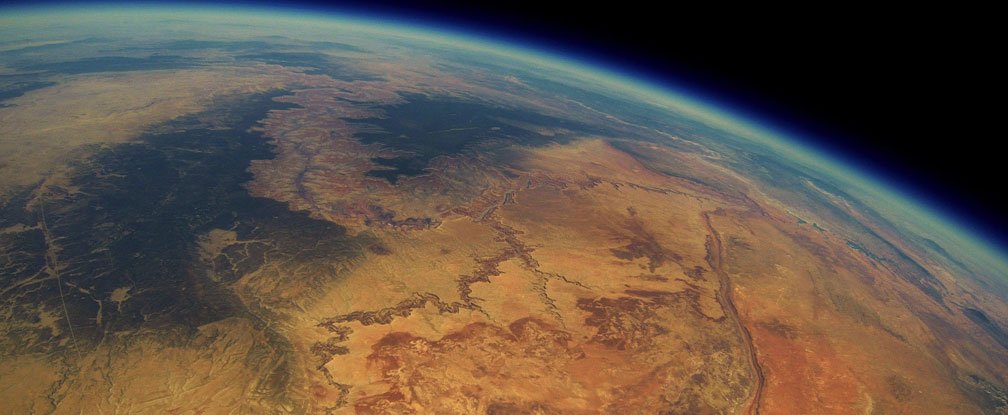

Two years ago, in June of 2013, a group of students used a weather balloon to launch a GoPro into space (or as near as they could get it). The launch site was just outside of Tuba City, Arizona, and it turned out to be a stunning success. The balloon reached a maximum height of 98,664 ft (about 18 miles/30 km).
There was just one problem: They lost the camera (along with all the footage).
In a post on Reddit, they explain that they had relied on a GPS on a smartphone in order to monitor the location. This may seem a little bit risky, what with the extreme heights involved; however, receivers used in today’s technology can track your phone well above 100,000 ft (30,400 m). They had planned on using an app in order to recover their device. If all went according to plan, the phone was to text them its GPS location once it got a signal as it was returning to Earth. This was supposed to happen at an altitude of about ~3000 ft (900m).
However, the text never came.
Unfortunately, the cell service coverage maps that they were relying on were not accurate. The team notes, “the phone never got signal as it came back to Earth, and we never heard from it. We didn’t know this was the problem at the time – we thought our trajectory model was far off and it landed in a signal dead zone (turns out the model was actually quite accurate).”
Of course, they didn’t discover that their trajectories were correct until much, much later – two years later, to be exact. The phone landed some 50 miles (80 km) from the launch point, and it wasn’t recovered until it was found by an Arizona hiker who took the device to an AT&T store and had the sim card identified.
When asked why they didn’t use a better tracking device, the team asserts, “we thought about it, but it came down to two things, time and money. It was a trade-off. The cell phone GPS system was far and away the cheapest, but less robust to signal outages. Using ham radio/APRS is almost foolproof but needs some extra equipment and ham radio license to use. We were also considering using a satellite phone (easy, but quite expensive), to avoid spotty cell tower coverages. At the time, project costs were already expensive so we went with the cheapest option and rolled the dice in some ways. Of course, in retrospect we would have picked APRS or the satellite phone option!”
Want to give this a try yourself, before you do, be sure that you contact the local powers that be, and they will give you a launch window to ensure that there is no interference with other flights. As the team notes, “We registered with the FAA and let them know our desired time, location of launch, and the balloon’s predicted trajectory ahead of time. They responded back with a location and time window in which we could launch our balloon.”
Watch the amazing footage below.
